I Just spent nearly two weeks in Vietnam. People keep asking about my favorite part of the trip. The answer is simple – the people. They are gracious, grateful and just want economic opportunity. Vietnam, officially known as the Socialist Republic of Vietnam is a communist nation and gradually developing. It remains poor as is evident even in big cities like the capital Hanoi and Ho Chi Minh, formerly called Saigon. As you travel through the beautiful country surrounded by lush mountains and narrow coastline beaches, each city has a unique appeal with rich history. That history is also a troubled, including the atrocities of war, but there is hope of a better and brighter future. I expected more anger, even hatred toward the west but I did not find it.

My trip began in Hanoi, surrounded by thousand of people on scooters making it almost impossible to cross the street. Every inch of every block is taken up by family businesses which also doubles as home. Everyone works at all hours, cooking and washing dishes in the streets and carrying heavy loads on their backs through narrow winding streets surrounded by pagodas, shrines, and grand colonial mansions built by the French.
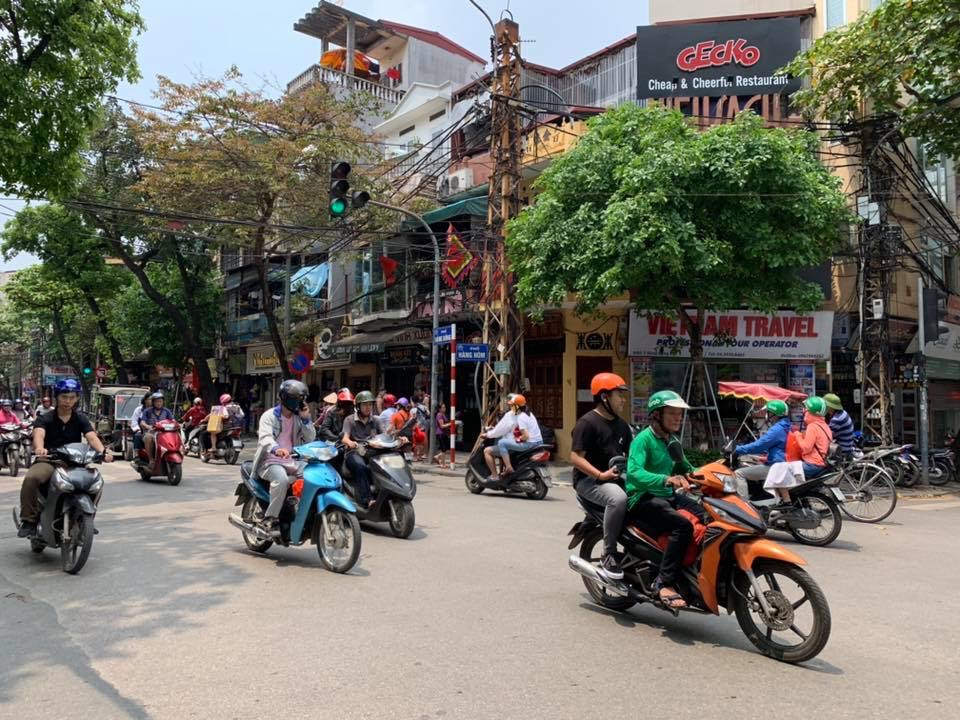
From Hanoi I traveled to the surreal World Heritage Site of Halong Bay. One limestone island after another is surrounded by emerald waters bustling with junk boat tours and fishing boats. It is peaceful. There are giant caves and grottos to walk through where soldiers hid from the enemy, and fisherman hide from heavy storms.
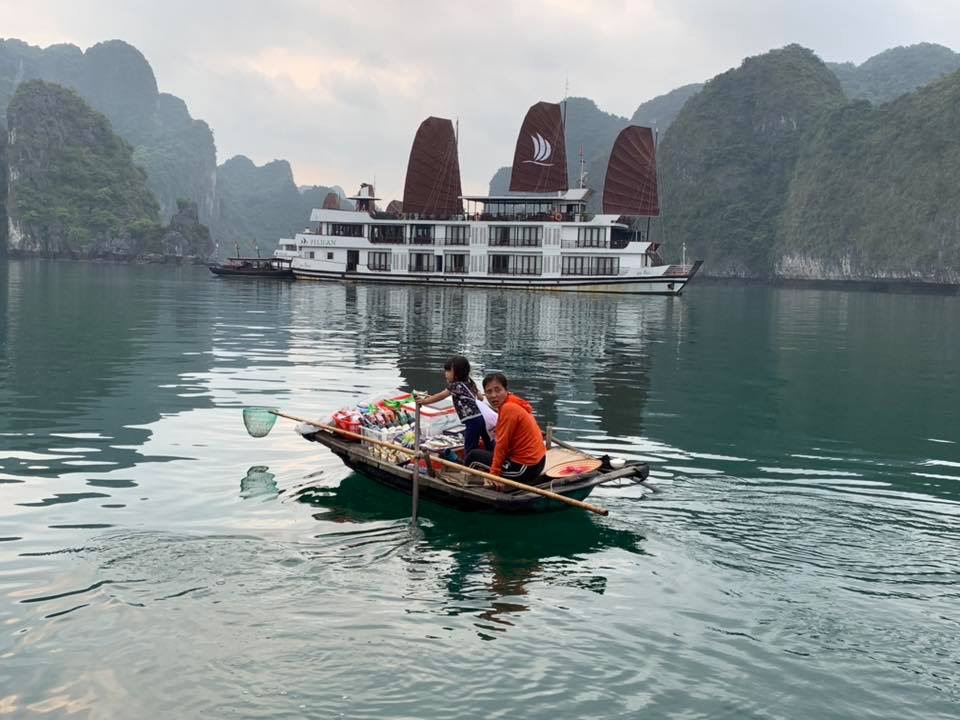
I then headed south to the quaint city of Hue to learn about the Nguyen Dynasty. This is where the emperor lived with his concubines in the Imperial City and Forbidden City once surrounded by moats and thick stone walls. Pagodas and shrines abound. Buddhism is still practiced. As incense burns, many come to pray and bring offerings .

Not too far away is Hoi An – what I call the land of lanterns. Here you get a break from the noise, pollution and scooters and weave through charming streets known for the best shopping in Vietnam. From silks to wood carvings and delicate prints, everything is made by hand. The former port city’s rich history is well preserved in its Chinese influenced architecture. At night the city is magical with candle-lit-lanterns floating down the Thu Bon River. It is among the many treasured spots where I took time to reflect and appreciate all that I have in my life.
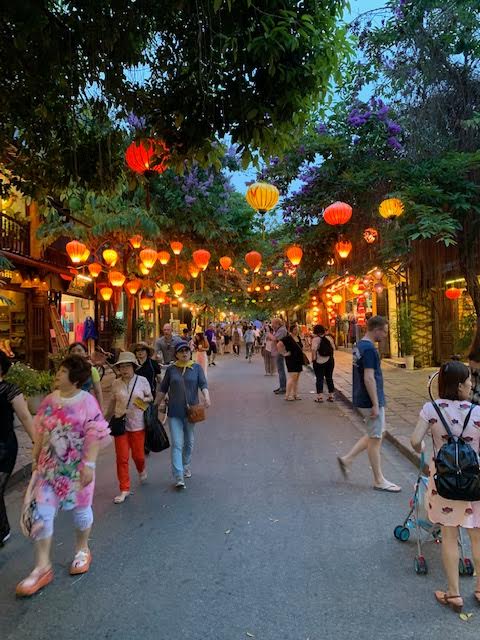
The tour ended in Ho Chi Minh. It is more modern, with colorful lights, high rise buildings and bustling with energy from the millions of people who live there. There are large scale symbols of progress seen in the retail outlets and restaurants. The locals say it is their version of New York City. Quite a contrast, outside the city is the Mekong Delta, a vast maze of rivers and swamps – home to floating markets, exotic fruits, and rice paddies. School children rush home to help make the coconut candy by hand. I watched and wondered if could I live this way, in a hut with limited water, living off the land.
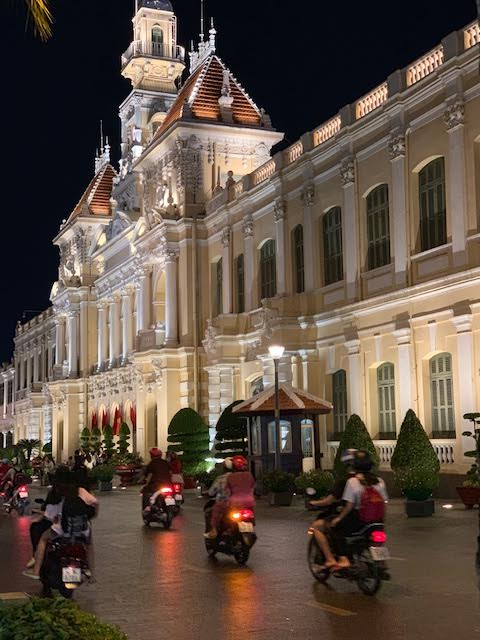
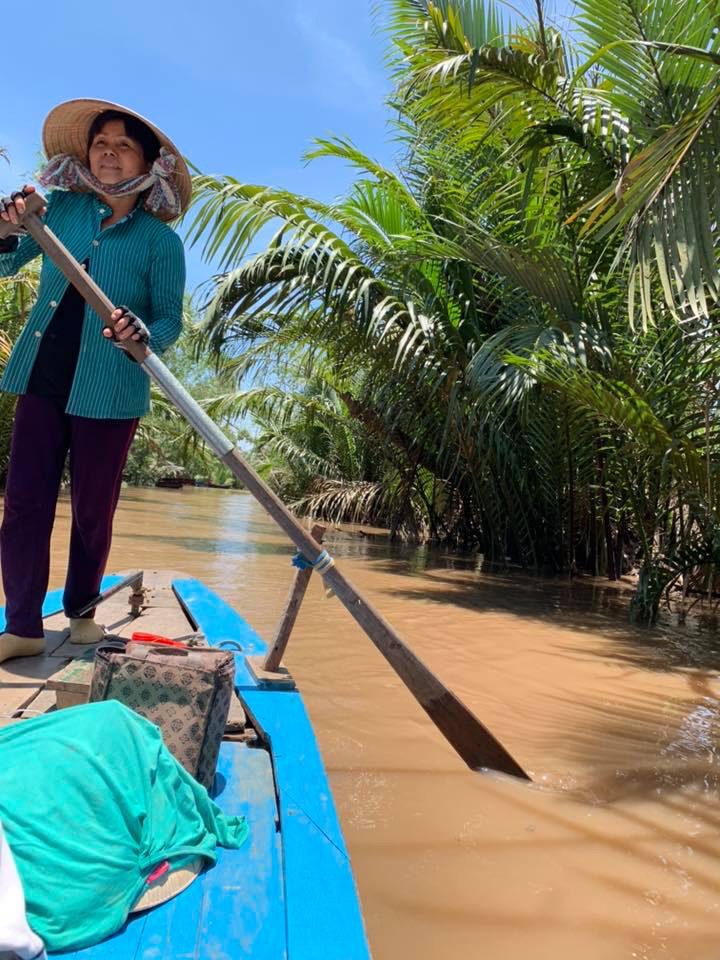
Cu Chi was the final destination to visit the network of tunnels used by the Viet Cong during the war. I found this stop as troubling and disturbing as visiting the Hanoi Hilton where John McCain and other POWs were held and tortured. But it was important to see both to understand the horrors of war and to honor lives lost and sacrificed.
I ended this trip with a heavy heart as 12 days aren’t nearly enough to grasp the beauty and complexity of this country. I’m happy to see more and more tourists traveling to Vietnam and hope it leaves the same indelible impression it did on me. It reminds us how big this world really is, filled with people from different cultures, with their own beliefs and ideals but working just the same and towards a happier more prosperous life.


